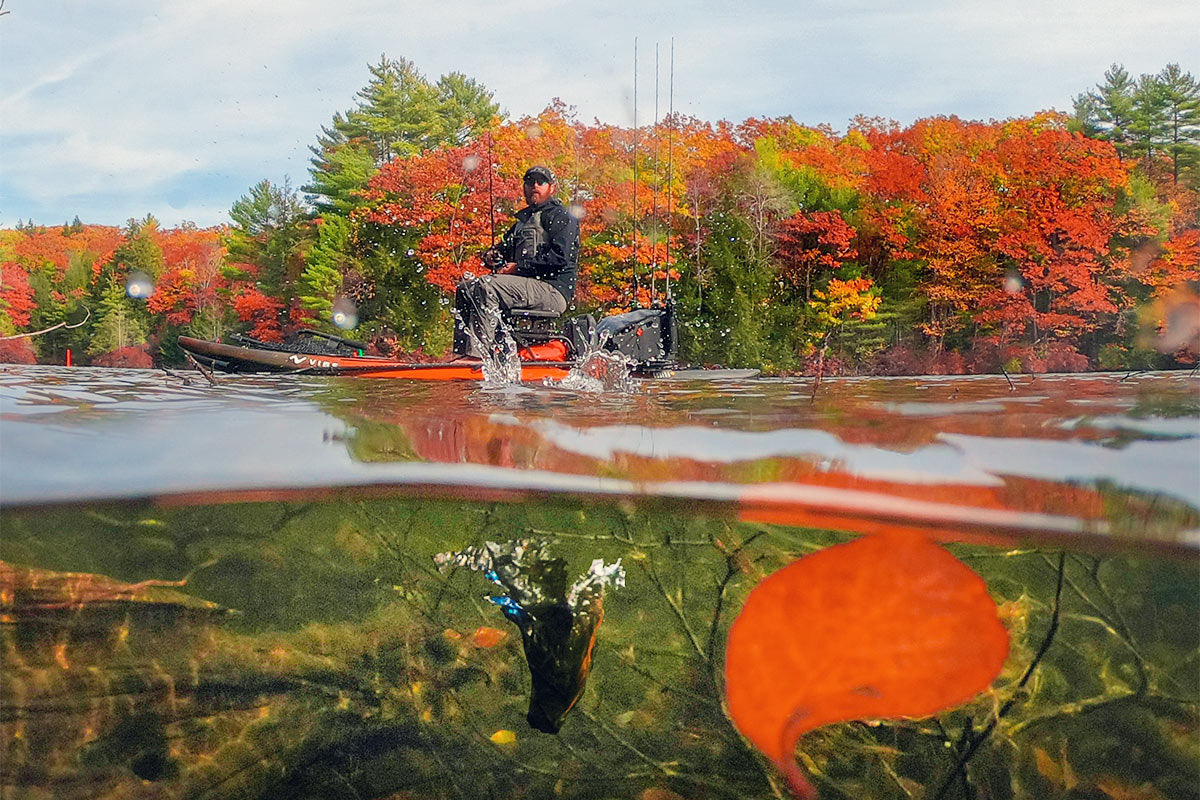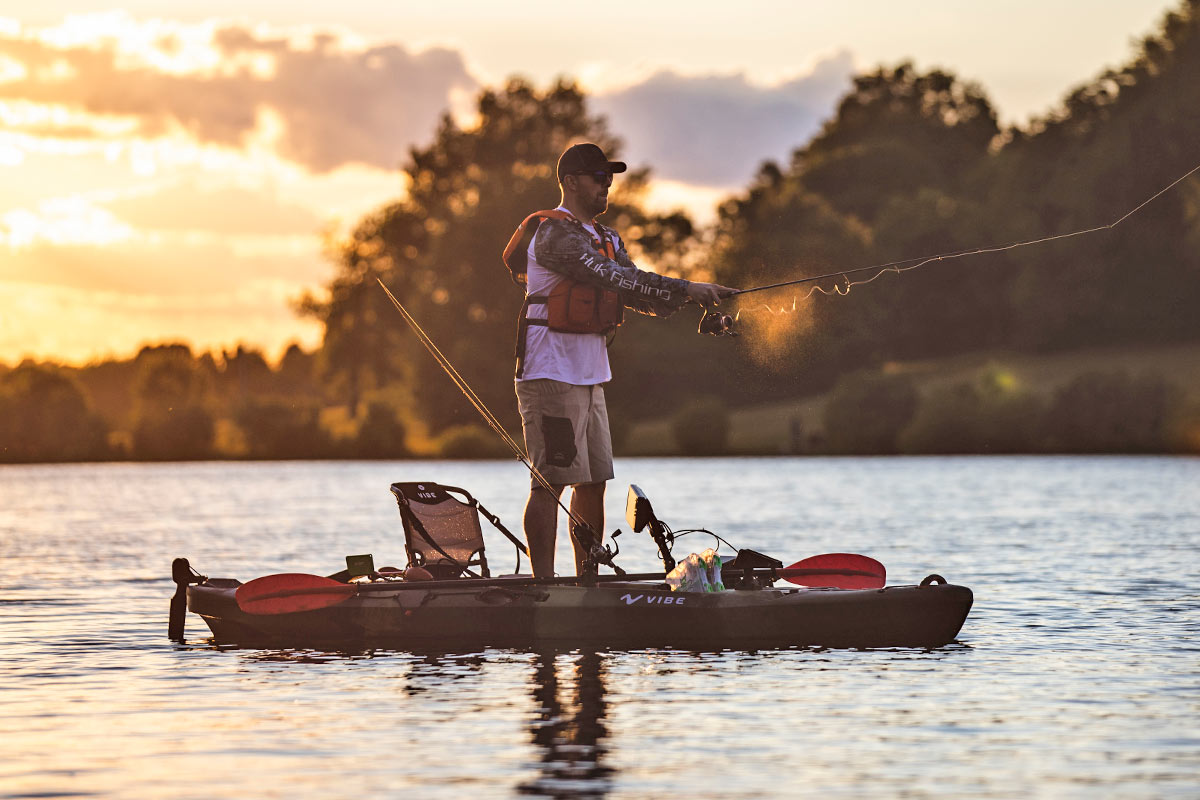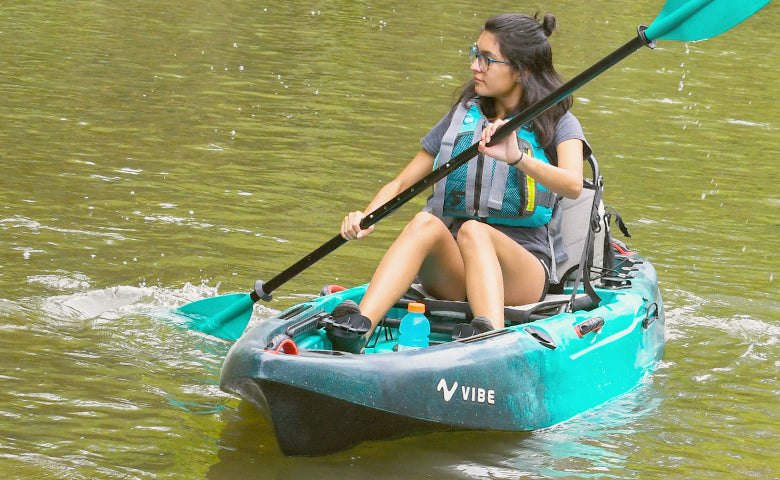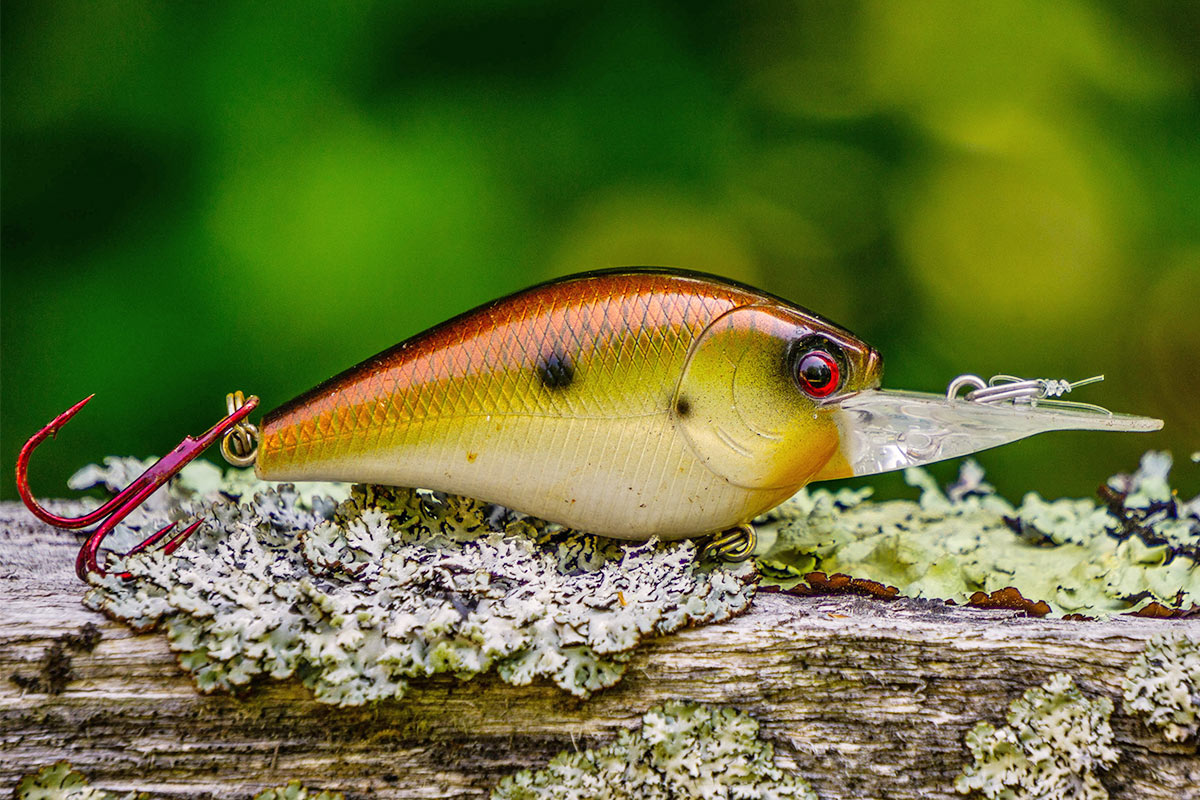How to Kayak Fish in the Fall

From late summer moving into early fall, with its cooler weather, more active fish, chances for saving money, and diverse beautiful backdrops across most of America, right now is the perfect time of the year to grab a kayak and a paddle – whether you're seeking awesome savings, or amazing views, or just a ton o' awesome catches!
Top Early Autumn Paddling Tips
Some "top fall tips" include:
¬ Kayak in the afternoon. Take advantage of the higher midday temps and make sure you give yourself enough time to get back to shore before the sun sets and the mercury drops.
¬ Bring your cellphone, but keep it safe by using a tethered waterproof phone case dry bag! If you get lost in the reeds, GPS can often help you find your way out.
¬ Pack wisely. A light jacket, a good hat to keep the rays off your head, sunscreen and polarized sunglasses are good companions – as is a Sun Jammer to keep your neck and face from burning. Right now, buy 2 and get 2 free!
Everything Bites Better In The Fall
For kayak fishing, there's no time of year that is more beautiful or often as productive, as depending on where you're at in the country and the size of the waterway, largemouth, smallmouth, walleye, muskie, pike and crappie, as well as trout, are all biting.
“Everything bites better in the fall,” says Matt Charette, a veteran fishing guide, as well as Vibe Product Manager and Pro Staffer. "As the fish try to fatten up for the upcoming winter, a lot of species are more active during the day as they look for food, and they also start gathering into larger schools. Fall is generally considered the best time of year to catch trophy-size fish, even more so if you're in the northern parts of America. But being stealthy is as important as ever, which is why good quality kayak deck padding can make all the difference to hitting the catch limit this time of year."
Early in the fall and very late summer, baitfish move into the shallows to spawn, causing gamefish to follow. Throughout the fall, areas with remaining green weeds are prime fishing spots.
Despite this being a time of transition, a jig and minnow is usually the best presentation no matter the depth. Another rule of thumb this time of year is to "go big and go slow." The baitfish are at their largest size of the season so this is the time to upsize your live bait. And since all fish are trying to conserve energy, use a slower presentation.
Early Fall Kayak Fishing Tips For Going After Fave Species
Largemouth Bass: Look For Schooled Bait Fish
Lakes and reservoirs are always full of schooled-up bait fish this time of year, and you want to make finding them your number one priority. Why? Because where you find them, you will also find hungry largemouth. Having a fishfinder installed on your fishing kayak helps tremendously.
Much fall largemouth success can be found with crank baits in 5–8 feet of water, or use reaction type baits to try to trigger the largemouths’ instincts to attack until they decide to go on a feeding binge.
Smallmouth Bass: They Go Deeper
During fall, smallmouth bass are also looking for bait fish, but they will be deeper, so try long, slender, diving crank baits that dive from 12–30 feet. Tube baits are also good, but try to match them to the size and color of the bait fish they are feeding on. Just let the fish tell you what they want. Using an anchor will help your kayak stay where you want it without drifting.
Blue Gill: Shallow Weeds & Drop Offs
During the fall, bluegill go to shallow weeds and rocks and hang right on drop offs. Live bait is the best way to go. If it’s midday and bugs are hatching, using a sinking fly can also get a lot of strikes.
Pike: Topwater & Floating/Diving Lures
Come fall, lake water temperatures cool, and big pike are no longer controlled by the temperature, so they roam to find bait fish. Start off by casting big topwater baits in the shallows near a weedline or a sharp break, off a point. If the pike are there, the bait will be engulfed, and the fight is on. On days when the fishing requires a little more effort, try floating/diving lures.
Crappie: Use What Worked In Spring, Will Work Now
For crappies, what worked in spring during the same temps will work now. Use small tubes and grubs in the 2-inch range. Cast to structure and swim them back to the boat. Crappies often concentrate around standing timber, which allows them to move shallow or deep as water and weather conditions dictate.
Perch: They're In The Shallows
Those great-to-eat yellow perch move into shallow waters as the water temperatures drop in the fall and feed on schools of small bait fish. Colors like chartreuse or bright red can be effective in clear or stained water, and flashing blades work well on sunny days.
Muskie: Go To Large, Slow Moving Baits
For big fall muskies, just like perch, follow the schools of baitfish. Cooler water means that they just won’t chase a fast moving lure, so go to large, slow moving baits. Prime places are clear weedless water where big muskie will be patrolling for bait fish like river-mouths, rocky points, narrows or in open water off big weed beds.
Late summer and early fall can be the very best time of year to be out kayaking – whether you've just a paddle in hand or a rod, so get out there and make memories!
There's still many months of awesome on water weather, so grab a kayak and a friend and don't miss out on the best kayaking to be had all year.




